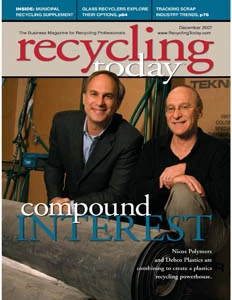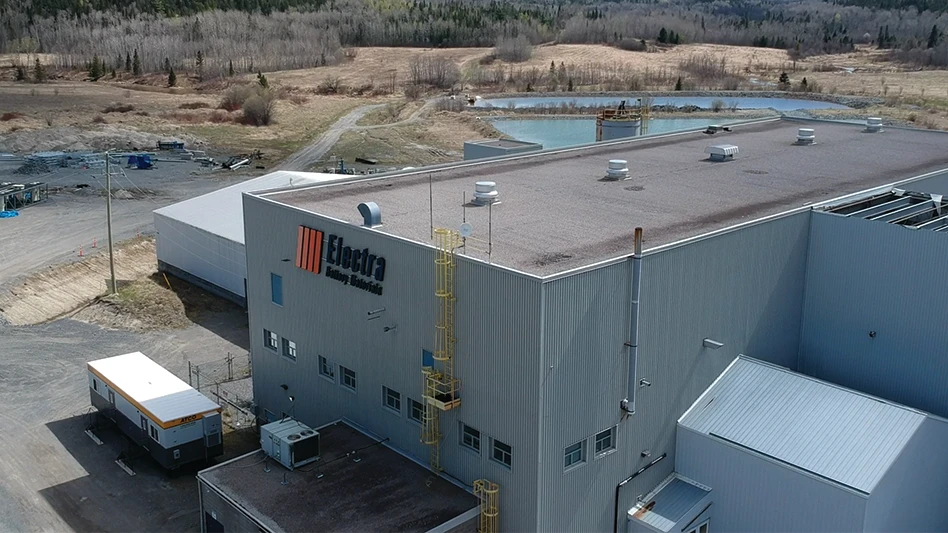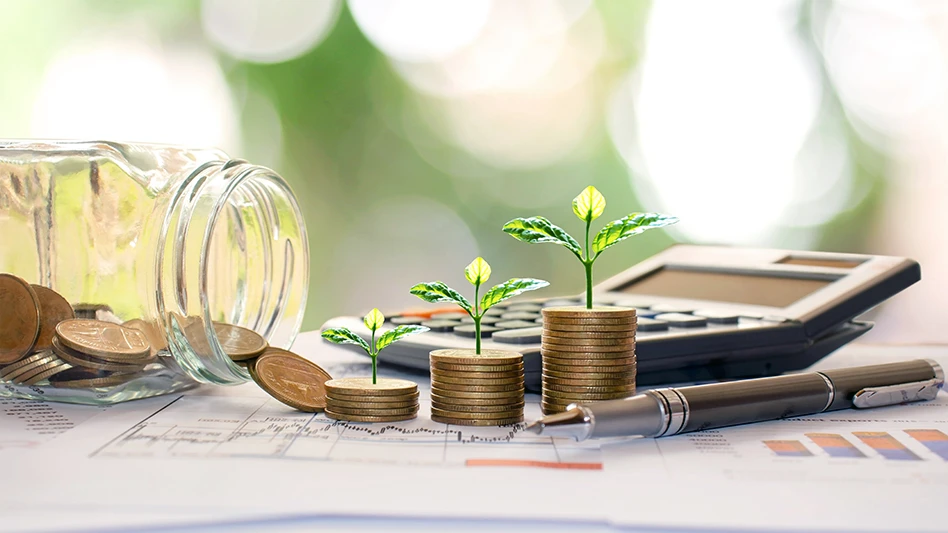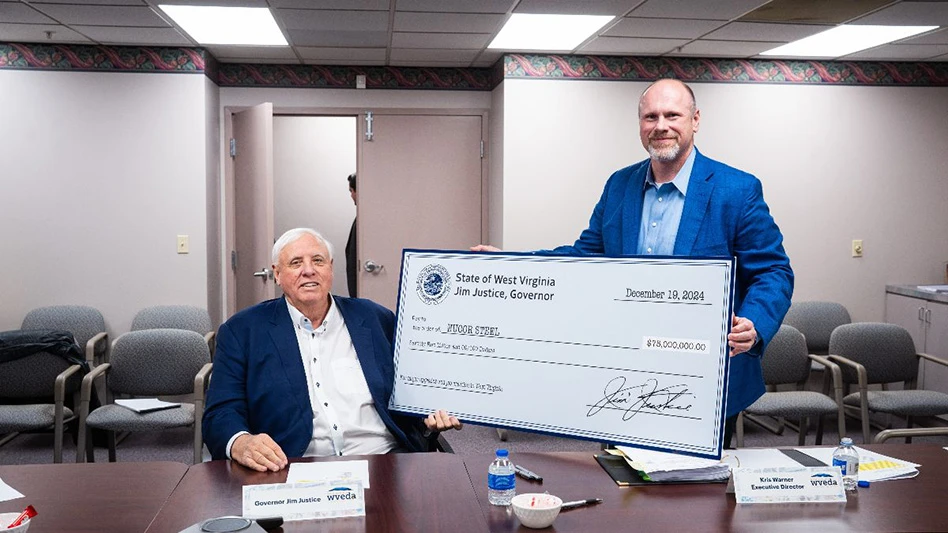Recyclers have differing opinions on the state of the glass industry and its future, but the one thing recyclers can agree on is the challenges that come along with handling this dwindling commodity. Fifteen years ago bottle-to-bottle recycling was a hot end market, and bottle plants were spread across the country. The growing popularity of plastic bottles throughout the years has led to the consolidation of bottle plants, making it more difficult and expensive for some recyclers to ship their cullet to these consumers.
Recyclers also are faced with the challenges associated with single-stream recycling, which includes the issue of glass quality. Processors either have to find a solution or risk falling behind.
TODAY. The consolidation of bottle plants throughout the years has had positive and negative effects on the industry. Today glass has to travel longer distances, and because it’s heavy and not easy to stack, recyclers are spending more time and money on transportation."It also makes it hard for both recyclers and bottle manufacturers to be cost competitive," according to Cynthia Andela, president of Andela Products, Richfield Springs, N.Y.
Todd Heller, president of Todd Heller Inc. in Northampton, Pa., remembers
The deposit-refund system was created by the beverage industry as a means of guaranteeing the return of their glass bottles to be washed, refilled and resold, according to www.bottle Today, however, the beverage and grocery industries oppose legislation that is trying to expand the system, Betty McLaughlin, executive director of the Container Recycling Institute says. Bottle bills have proven their worth in states such as Michigan, which has 97 percent return rate, high-quality material because it is not commingled at the curb and no taxpayer money is needed to do it, McLaughlin says. Contamination is a huge issue among recyclers, and with deposit bills, glass isn’t mixed in with paper and plastic, so there’s less chance of breakage, she adds. Some recyclers, like Curt Bucey, executive vice president and COO of Strategic Materials, Houston, also see bottle bills as the solution to the glass industry’s problem with single-stream recycling. Recyclers get cleaner material and higher volumes of glass from deposit bills, Bucey says.
a time when green glass was hard to move because none of the plants around him were making green glass containers. In some situations, green glass was being exported to Europe, Heller says.
Bottle Bill Battles
bill.org, a Web site run by the Container Recycling Institute, Glastonbury, Conn.
One way recyclers have turned the bottle plant closings into a positive is by becoming more diverse in their end markets and customers. Along with the traditional bottle-to-bottle and fiberglass markets, recyclers are also exploring alternative end markets, such as landscaping, sandblasting and construction. And even through these secondary markets are limited when it comes to volume and profit, recyclers say they are more forgiving in terms of quality compared to the fiberglass and bottle markets.
Recyclers that contract with the furnace are primarily looking for one kind of glass, clear cullet, while those processors with multiple markets take glass of any color, according to Andela. With a variety of customers, recyclers have a fallback plan, so if one market falls, another may rise, she adds.
Heller has been in the recycling business since 1980 and today he currently processes glass, operates a material recovery facility (MRF), manufactures glass beads and makes different aggregate products. His end markets include containers, fiberglass and construction materials.
Houston-based Strategic Materials’ customers include traditional bottle and fiberglass manufacturers, but the company also sells to specialty markets, such as sandblasting, filler, abrasives and countertop manufacturers.
Even though recyclers continue to explore these specialty markets, many agree the container and fiberglass markets remain the industry’s most profitable end markets.
"Using recycled glass for containers and fiberglass saves raw materials, energy, and air emissions," says Curt Bucey, executive vice president and COO of Strategic Materials.
Another issue concerning recyclers and affecting consumers is the quality of glass coming into facilities. With municipalities moving toward single-stream recycling, recyclers are collecting more commingled material instead of source-separated material. The dispute recyclers have with single stream is that it purs broken glass in contact with other materials, and consumers of the resultant cullet sometimes complain about quality.
"It used to be 10 years ago when people were separating at the curb, the glass we would get into our plants would have maybe 1 percent garbage mixed in, so it was relatively pure," Bucey says. "Today with single stream, we receive up to 50 percent garbage."
While single-stream recycling is convenient for municipalities, it has a potentially negative effect on recyclers’ equipment. Because equipment currently installed at these plants isn’t intended to handle single-stream material, it is costing recyclers more time and money to sort the wanted material from the unwanted. Also, the use of compaction vehicles in collection results in breakage, which poses problems not just for glass recyclers, but also for paper consumers.
Bucey’s observation of single stream sorting is "the dirtier the stuff that comes in, the harder it is to clean up." Often times commingled materials have to be rerun through the system in order to produce the cleanest product. These multiple passes cause wear and tear to the machines. The glass could also be broken in the process, making it more difficult to sort by color.
TOMORROW. Recyclers are dealing with the changing markets in a couple of ways. Heller’s company has recently been acquired by Ireland-based NTR’s recycling business GreenStar North America.
As recyclers look for ways to remain competitive in the glass industry, equipment providers are also working on ways to help them address other end markets outside of the container and fiberglass manufacturers. To show her customers there are alternative markets for glass, at her company’s facility, Cynthia Andela, president of Andela Products in Richfield Springs, N.Y., has put together a plant that makes glass abrasives. The plant washes, dries, screens, bags and sells glass, Andela says. The end product, also known as Sun Stone or White Beauty, is used by a variety of industries, including sandblasting, structural and automotive, she says. Sun Stone is also being sold for landscaping uses. The next step for Andela is to configure a process that will turn "waste" glass into a product that’s worth $100 to $150 per ton, Andela says. She says she sees recyclers heading into many markets in the future and she says she believes these plants can help them get there.
"They are a very positive and progressive group of companies and people to work with, and we are looking into new equipment, markets and technology for the material," Heller says. Because markets are changing, Heller is also updating and adding equipment as needed at his facility.
Alternative Markets
Bucey says he sees deposit bills, such as the one in place in California, as the solution to the problems single-stream recycling causes glass recyclers. "I specifically pick California because the beer distributors and grocers aren’t required to handle the returned material, which is traditionally one of their complaints toward bottle bills," he says.
Bucey says he hopes more deposit laws will spring up across different states, which always generate higher recycling levels as well as material of better quality, he adds.
He says the industry also will see more investment in expensive equipment to try to clean the dirty mixed glass. His company is currently investing money across the U.S. to install optical sorters and additional processing to increase supply for container and fiberglass markets.
Andela says she believes curbside will remain the universal way recyclables will be collected, and single stream will continue to grow in popularity.
"The average consumer wants to recycle conveniently. Dual stream produces the cleanest recycled material, but single stream is popular because it’s so convenient and results in increased rates of recycling by people," Andela adds.
What recyclers and others can’t estimate is how much glass is going to continue to come into their facilities. What Heller does know is recyclers are going to have to be knowledgeable about the processing equipment, the material and the markets if they want to survive and compete in the glass processing industry.
The author is assistant editor of Recycling Today and can be contacted at kmorris@gie.net.

Explore the December 2007 Issue
Check out more from this issue and find your next story to read.
Latest from Recycling Today
- Sortera Technologies ‘owning and operating’ aluminum sorting solutions
- IDTechEx sees electric-powered construction equipment growth
- Global steel output recedes in November
- Fitch Ratings sees reasons for steel optimism in 2025
- P+PB adds new board members
- BlueScope, BHP & Rio Tinto select site for electric smelting furnace pilot plant
- Magnomer joins Canada Plastics Pact
- Out of touch with reality





